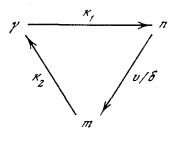Institute of Biophysics of the Academy of Science of the USSR, Pushchino, USSR
(Received 24 November 1969)
Abstract—Contractile properties of striated muscle are derived from its structural organization
under some assumptions about myosin crossbridges cyclic action.
Well-known dynamic properties of striated muscle are given quantitatively by the suggested
theory. Hill’s equations follow from the theory automatically and precisely. Calculated rates of force development and redevelopment after quick release coincide with experimental data. The theory accounts for auto-oscillations of insect flight muscles.
The theory permits one to predict some new facts, for instance auto-oscillations of force developed by commonly employed frog sartorius muscles under isotonic conditions. These auto-oscillations have been registered under the predicted experimental conditions.
